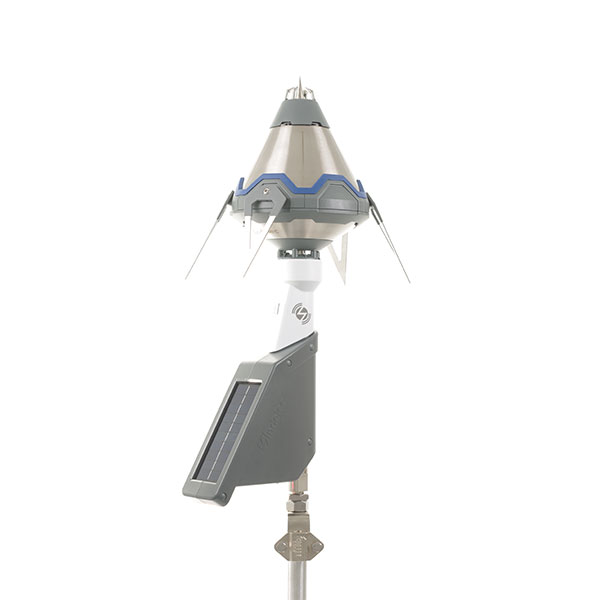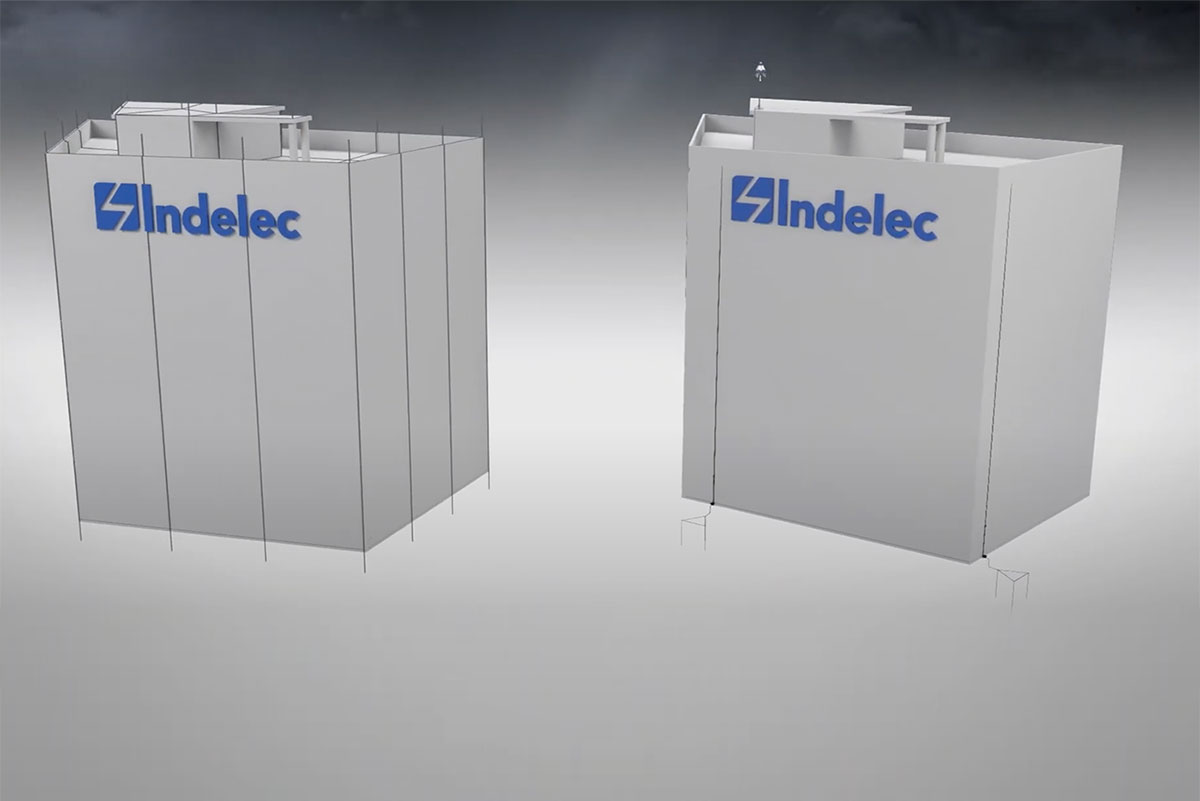Resources
Lightning
Daily, several thousands of thunderstorms are active, millions of lightning discharges are recorded throughout the world. This natural phenomenon causes billions of damages to buildings and infrastructures, not even mentining the deadly accidents.
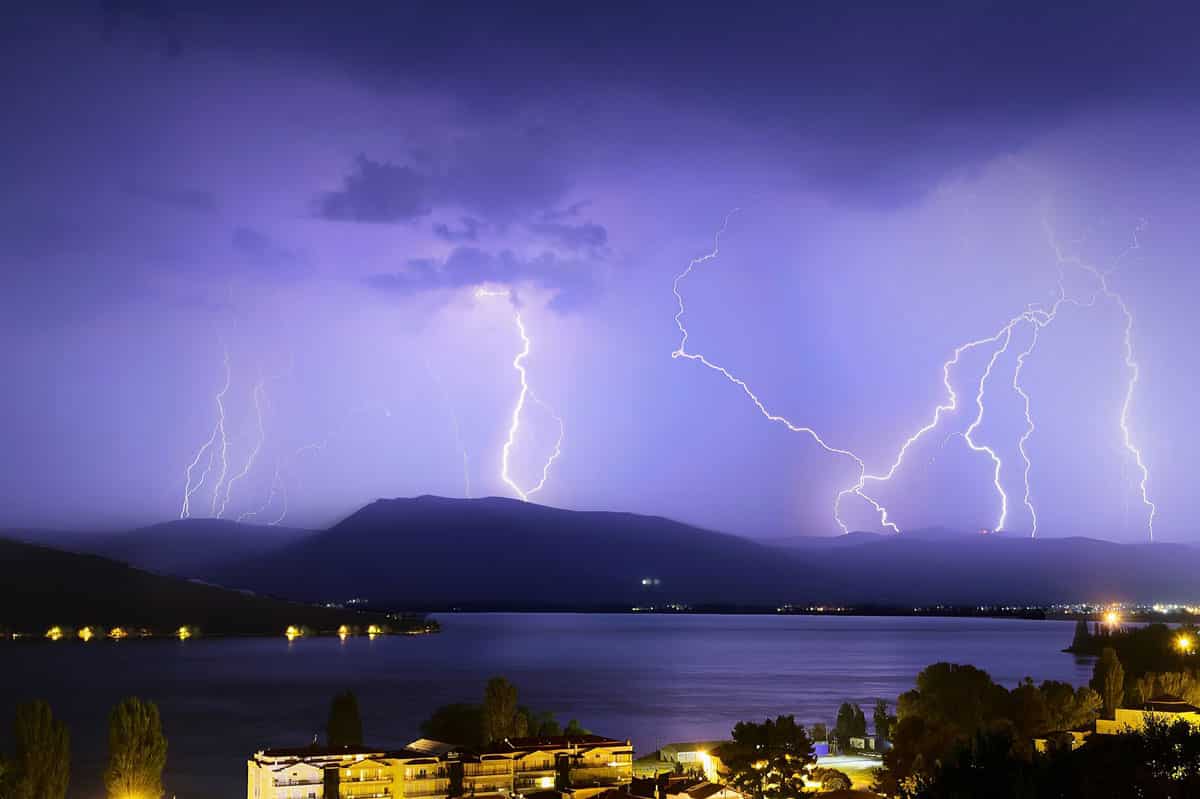
F.A.Q.
Lightning phenomenon Frequently Asked Questions
You want to learn more on lightning ? Based on more than 65 years of expertise in this field, we provide you hereunder with detailed information.
Certain atmospheric conditions, such as high temperature or humidity, lead to storm clouds being formed. These huge, anvil-shaped cloud masses are usually of the cumulonimbus variety, the lower part being made up of water droplets while at higher altitude are found ice crystals.
Strong up currents within this type of cloud cause the electric charge on the water droplets to be separated resulting in high levels of positive charge at the top and high levels of negative charge at the bottom of the cloud. Occasionally, a pocket of positively charged electrons is trapped low in the cloud within an area of negative charge.
A storm cloud forms overhead creating a vast dipole with the ground and, under the influence of the negatively charged cloud base, the ever present electric field in the atmosphere at ground level suddenly inverts and builds up rapidly reaching between 10 and 15 kilovolts per meter. An electrical discharge to the ground is then imminent.
The first stage of a lightning strike involves an initial discharge of low luminosity known as a downward leader. It forms at the cloud centre and moves down toward the ground in steps of several dozen meters at a time.
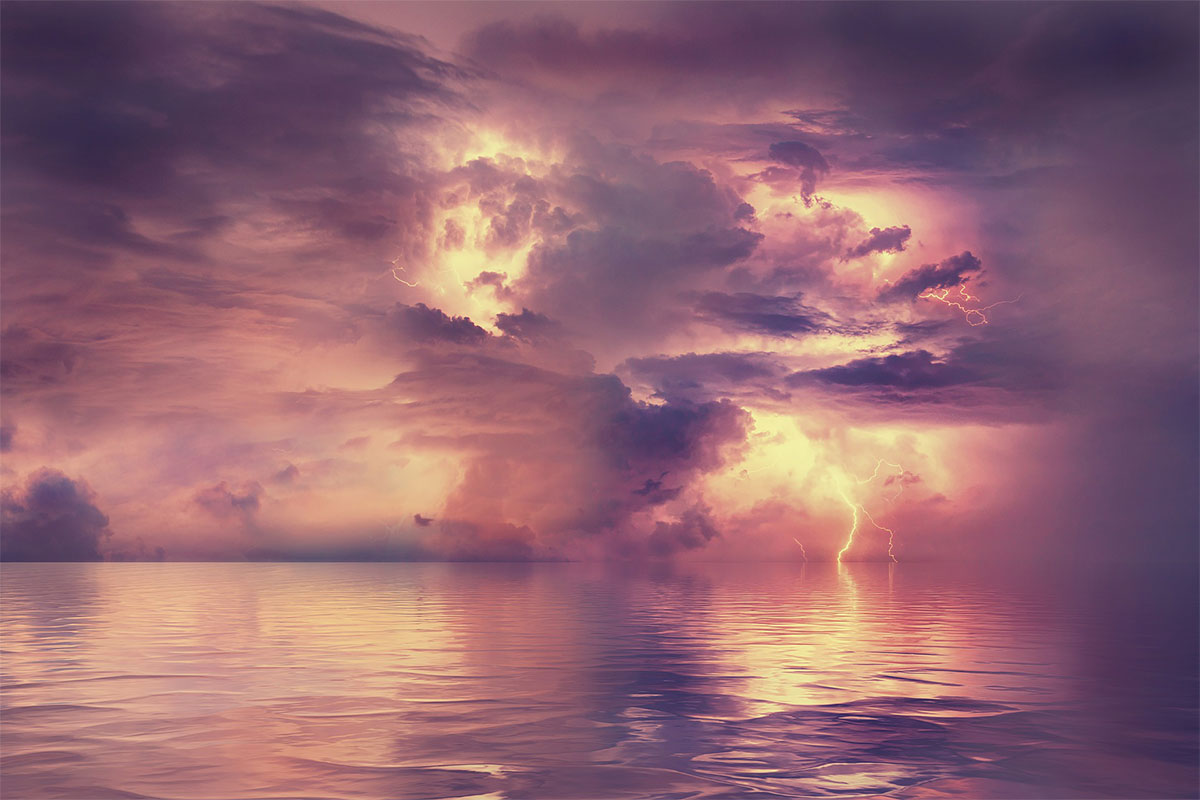
At the same time, the electric charge in the atmosphere at ground level increases as the downward leader gets closer.
Any high point in the vicinity such as an electricity pylon or a lightning rod immediately gives rise to natural ionization in the form of a series of electrical discharges which are blue in color. This is the point effect or corona effect as observed by sailors during a storm, known as Saint Elmo’s fire, or by mountaineers who report hearing the characteristic humming of «bees» prior to a storm.
As soon as the downward leader is close enough to the ground, the ionization due to the corona effect intensifies, especially near any high point, and eventually turns into an upward discharge : this discharge is the upward leader that develops toward the cloud.
When one of these upward leaders comes into contact with the downward leader, a conductive path is created allowing a powerful current to flow. This is lightning and is characterized by its bright flash and the deafening sound of thunder.
The lightning strike may in fact be made up of a number of successive return strokes, only a few hundredths of a second apart, all following the same highly ionized path.
A very large majority of lightning discharges (approx 90%) are negative downward discharges : the negative-polarity charges are circulating from the bottom of the thunderstorm clouds to the ground.
Occasionally – usually during the winter – a downward leader may build up within a positively charged pocket in the base of the cloud and discharge down to the ground. This type of lightning is known as positive downward.
When electrical conditions in the atmosphere permit, an upward leader variety of lightning may shoot up spontaneously from a point of high altitude (e.g. a mountain peak, telecommunications tower or high building). The resulting lightning is known as positive upward or, less frequently, negative upward lightning depending upon the cloud’s electrical charge.
These upward lightning strikes current, usually positive, is more intense and therefore these discharges are more destructive than downward lightning strikes.

There are approximatively 32 million Cloud to Ground discharge per year in the world, ie. 50 to 100 Cloud to Ground discharges per second.
In 2016, The Insurance Loss due to lightning in the USA only are estimated at 825 million USD for homeowners (more than 100,000 claims) and 108 million for non-residential buildings.
Several websites such as http://www.struckbylightning.org/strike_database.cfm are compiling all lightning accident reports in a database.
The damages caused by lightning are very severe due to the lightning current specifications : very high intensity (several kA) and a current waveform with a very short rising time (steepness) that generate huge overvoltage transient currents: for example, the voltage generated in a 50m long copper strip (30mm x 2mm) reaches up to 10 MegaVolts based on the normative subsequent strokes characteristics (Level I).
Lightning frequency changes from a region to another around the world. The development of the lightning clouds (cumulonimbus) is favored by the large variations of temperatures in-between the ground (warm and humid) and the higher part of the atmosphere (cold). Lightning is concentrating around the tropics and limited to the summer season in temperate climates.
In 2017, scientists mentioned the Maracaibo Lake (Venezuela) as the most world lightning prone area.

Lightning data are indicating an increasing trend of lightning activity:
During the summer 2018, France witnessed a record 700,000 discharges.
On June 2018, more than 77,000 discharges were accounted in a single day over France.
From January to September 2018, there have been only 30 days without any lightning activity in France. Scientists have published in Nature review a survey demonstrating that 1°C of additional average temperature due to global warming equals to a 10% increase of the lightning activity.
With an estimated 2 to 4°C additional average temperature (according to the recent GIEC data), lightning activity and thunderstorms are very likely to escalate.
Another scientists team has also proven the link between air pollution and thunderstorms in the Malacca Strait (Malaysia): studying the 1.5 billion lightning events from 2006 to 2015 in the region, this survey establishes a relationship: the more polluted the air is, the more lightning are observed, due to the change of air composition and its conductivity.
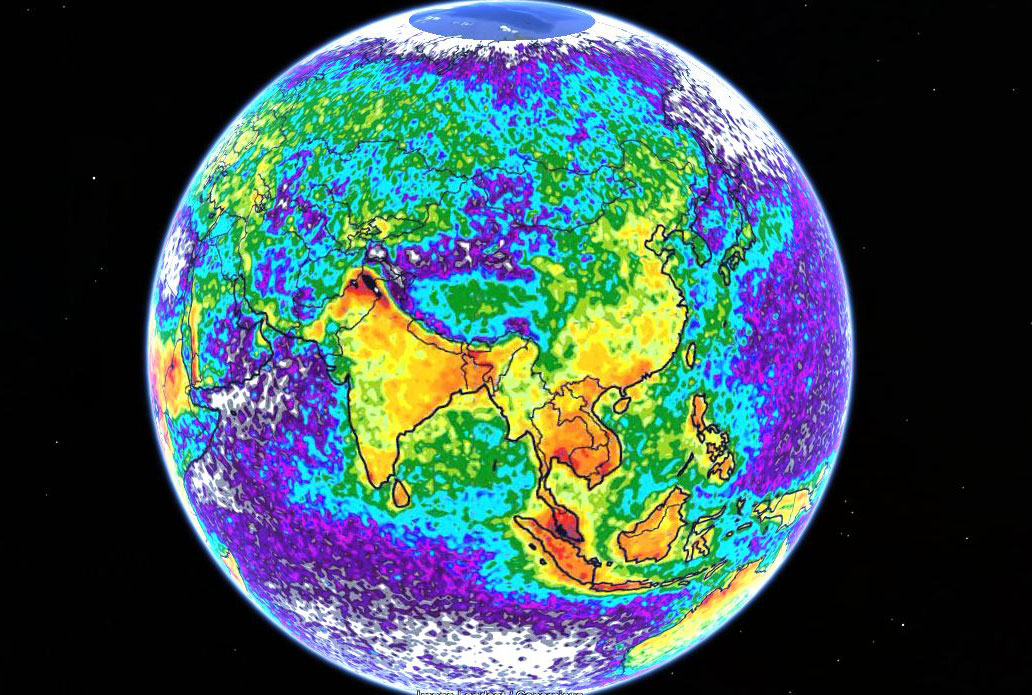
Lightning represents an attractive source of renewable energy, favoring the emerging countries from the tropical regions, very prone to lightning.
Nevertheless, there is no lightning current collection technology available.
Surveys are ongoing, with scientists testing laser beam ionizing a specific path to “conduct” the discharge to a specific collection point. But no operational system is yet available.
F.A.Q.
Lightning Protection System Frequently Asked Questions
1753
Benjamin FRANKLIN invents the lightning conductor. He was the first to demonstrate the electrical nature of lightning with his now famous «kite experiment».
At more or less the same time in France, DALIBARD confirms the theory in Marly with his experiment with a metal rod which was electrified during storms.
Jacques de ROMAS also reaches this conclusion, with a different kite than FRANKLIN’s : a copper wire is winded around the rope to the ground The discovery rapidly lead to an extraordinary fascination for lightning conductors. They began to appear first of all on church spires and shortly afterwards on buildings.
1880
A Belgian physicist, named MELLSENS, recommends protecting buildings by covering them with metal wires connected to a series of spikes on the roof and then well earthed. This was the very first meshed cage.
1914
First attempts to improve on the single lightning rod by the Hungarian-born SZILLARD and the Frenchman, DOZÈRE. His works will lead to the design and manufacture of radioactive lightning rods, using radioactive sources around the tip of the rod to maintain a permanent ionization.
1985
For health safety considerations, radioactive lightning rods are banned.
Following several years’ research resulting in improved awareness of the physical properties of lightning, a new type of lightning conductor is developed giving stronger ionisation around the terminal through the use of electrical equipment independent of any external power source. This new technology is named “Early Streamer Emission” (ESE) lightning air terminals.
1995
Release of the French standard NF C 17 102 for “Lightning protection systems using Early Streamer Emission rods”.
This standard has been translated in a many countries and inspired several national standards in Spain (UNE 21 186), Portugal (NP 4426), Romania (I7), Argentina (IRAM 2426), Turkey, Angola, etc…
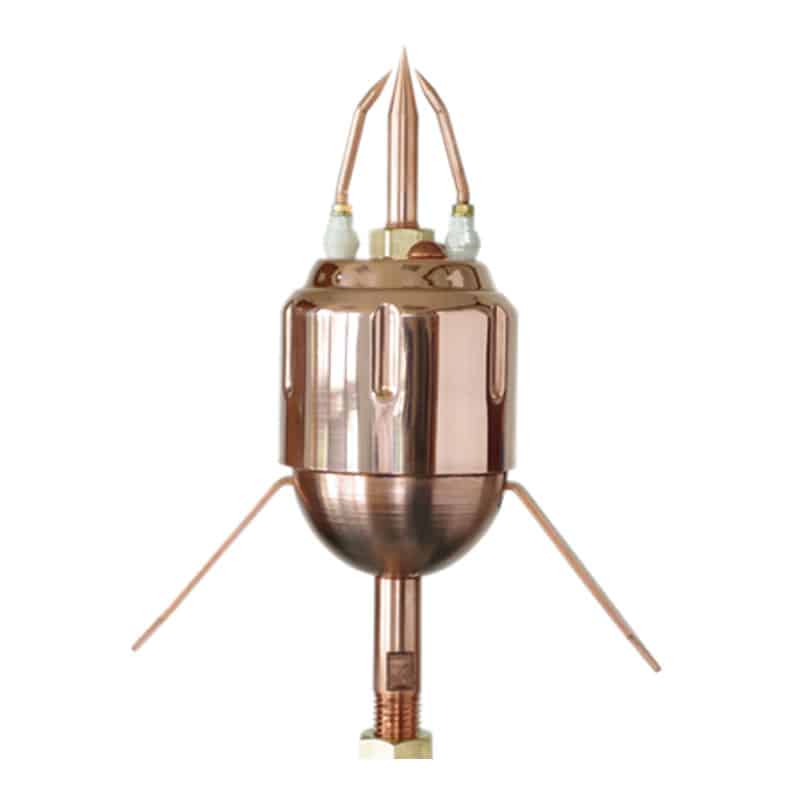
2015
The US corporation Underwriter Laboratories (UL) certifies Early Streamer Emission lightning rods and proposes inspection services for ESE lightning protection system installation.
2016
The International Lightning Protection Association (www.intlpa.org) accounts more than 680 000 Early Streamer Emission lightning air terminals installations worldwide.
A Lightning Protection System is made of four main components:
